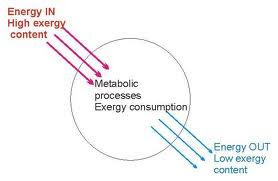Friday, June 1, 2012
When The Foundation Of Mathematics Is Based On Indeterminate Numbers
Between Content And Form, Between Assimilation And Accommodation Are The Polar Phases Of The Total Life Process—And Reciprocal Movement
There are a number of important consequences that follow from Gödel’s proof but the one that is most significant in respect to Piaget’s constructionist structuralism, it seems to me, is the one that implies the existence of supernatural numbers. The derivation of a true theorem in number theory, which is its own negation, may be interpreted as the requisite condition for the existence of supernatural numbers. These numbers are peculiar in that they have the property of being infinitely large while possessing no numeral representation. But, everything that can be proven for natural numbers can be proven for supernatural numbers, with the exception that natural numbers are determinate while supernatural numbers are indeterminate.
When the foundation of mathematics is considered in this light, Piaget becomes easier to comprehend. For instance, when Piaget describes the nature of knowledge as being like a pyramid of knowledge that “no longer rests on foundations but hangs by its vertex, an ideal point never reached and, more curious, constantly rising,” he is being very consistent with the latest developments in number theory. Piaget continues:
“In short, rather than envisaging human knowledge as a pyramid or building of some sort, we should think of it as a spiral the radius of whose turns increases as the spiral rises…This means, in effect, that the idea of structure as a system of transformations becomes continuous with that of construction as continual formation.” [Jean Piaget, Structuralism, 1970, p. 34]
The concept of “knowledge as structure” and structure as a “double movement” e.g., the “completeness proof” for natural numbers requiring supernatural numbers and the “consistency proof” for supernatural numbers requiring natural numbers, becomes generalized in the thought of Piaget as the relationship of interdependence that exists between content and form. It is in this interdependent relationship that we find the basis for Piaget’s constructionist theory. Piaget puts this conclusion in his own words:
“Since Gödel,...the idea of a formal system of abstract structures is thereby transformed into that of the construction of a never completed whole, the limits of formalization constituting the grounds for incompleteness, or, as we put it earlier, incompleteness being a necessary consequence of the fact that there is no “terminal” or “absolute” form because any content is form relative to some inferior content and any form the content for some higher form.” [Piaget, Structuralism, 1970 p. 140]
With the knowledge of the interdependence of content and form firmly established, Piaget turns to the subject of Biology in order to give his theory a concrete elaboration.
Piaget was deeply influenced by Darwinian evolution. In Piaget’s understanding of processes and states, in terms of developmental stages, we see the depth of this influence. However, Piaget went further than Darwin in his elaboration on the effects of the environment on the development of the individual. In addition to natural selection, Piaget believed something more was going on in an organism’s adaptation to its environment. For Piaget an active restructuring and accommodation of an organism to its environment also influenced the development of the organism. Piaget described this new level of accommodation in terms of the interplay of accommodation and assimilation that occurs in the normal life processes. Martindale explains:
“Basic to all Piaget’s explanations is a conception of the individual life process. This has two major aspects or phases: the assimilation of objects to individual activity, on the one hand, and the accommodation of activity to the object world on the other. The two processes of assimilation and accommodation are polar phases of the total life process. They are not always in equilibrium and may even operate in partial autonomy from one another. One of the fundamental facts of the life process is the establishment of equilibrium between assimilation and accommodation.” [Don Martindale, 1981, p. 342]
Subscribe to:
Post Comments (Atom)







No comments:
Post a Comment